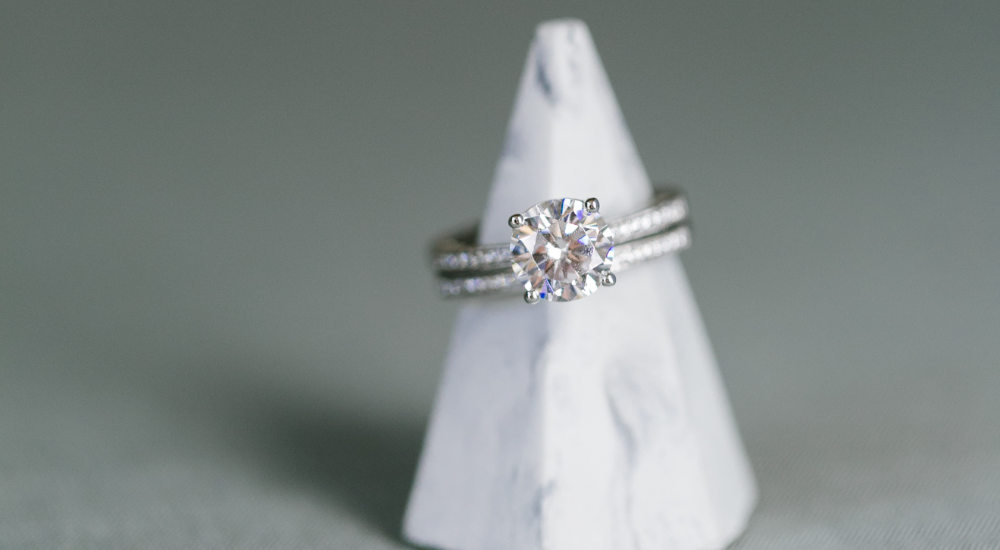
Moissanite Diamonds: The Brilliant Alternative
What is Moissanite?
Moissanite might sound like a high-tech gadget, but it’s actually a stunning gemstone that’s been making waves in the jewelry world. First discovered in 1893 by the French chemist Henri Moissan, it was initially found in a meteorite. Although it was mistaken for diamond at first, scientists later realized it was a unique mineral composed of silicon carbide.
History of Moissanite
Henri Moissan stumbled upon this sparkling wonder when analyzing a meteorite sample. The discovery was groundbreaking, and he later won the Nobel Prize in Chemistry in 1906. However, it wasn’t until the late 20th century that moissanite was synthesized and became available for commercial use, making it a popular choice for those seeking an ethical and cost-effective alternative to diamonds.
Composition and Formation
Moissanite is made of silicon carbide, a compound that’s incredibly hard and durable. It forms under extreme conditions, usually in the earth’s mantle or in meteorites. In the lab, scientists can create moissanite by mimicking these high-pressure, high-temperature conditions. This process not only ensures that the gem is free from inclusions and imperfections but also allows for more control over its color and clarity.
Moissanite vs. Diamonds
When it comes to comparing moissanite and diamonds, the two are often mistaken for one another due to their similar appearance. But there are some key differences.
Visual Differences
At first glance, moissanite and diamonds might look the same, but a closer inspection reveals their unique characteristics. Moissanite exhibits a fiery brilliance and spectral dispersion that outshines diamonds. Its sparkle is more intense due to its higher refractive index, lab diamonds, which means it catches the light in a way that’s both mesmerizing and distinctive.
Sparkle and Brilliance
One of the most noticeable differences is the sparkle. Moissanite has a brilliance that surpasses that of diamonds because of its higher refractive index. While diamonds shine with a more subdued sparkle, moissanite dazzles with a rainbow effect that many find enchanting.
Color and Clarity
Diamonds come in a variety of colors and are graded based on their clarity. Moissanite, however, is usually near-colorless, though it can sometimes show a slight tint depending on the lighting. In terms of clarity, moissanite is almost always flawless, as it’s created in controlled environments that eliminate common inclusions.
Durability Comparison
Both moissanite and diamonds are known for their durability. Diamonds are the hardest natural substance on Earth, ranking 10 on the Mohs scale of hardness. Moissanite, while slightly softer, is still incredibly hard, ranking 9.25 on the same scale. This makes moissanite a durable choice for daily wear, including engagement rings.
Benefits of Choosing Moissanite
Cost-Effectiveness
One of the most compelling reasons to choose moissanite is its cost. Moissanite is significantly less expensive than diamonds, offering a more affordable way to enjoy the beauty of a gemstone without compromising on quality or style.
Ethical Considerations
Ethical concerns have become increasingly important in the jewelry industry. Moissanite is a lab-created gem, which means it doesn’t come with the same ethical dilemmas as mined diamonds. Choosing moissanite supports sustainable practices and reduces the risk of contributing to conflict mining.
Variety and Customization
Moissanite comes in various shapes, sizes, and cuts, giving you plenty of options to create a custom piece of jewelry that suits your taste. Whether you prefer a classic round cut or a trendy emerald cut, moissanite can be tailored to fit any style.
How to Choose the Perfect Moissanite
Shape and Cut
Selecting the right shape and cut for your moissanite is crucial. The cut determines how well the gem reflects light, while the shape affects its overall appearance. Popular cuts include round, princess, and cushion, each offering its own unique sparkle and style.
Setting and Style
The setting of your moissanite can enhance its beauty and make it stand out. Whether you prefer a classic solitaire setting or a more elaborate halo design, the right setting can complement your moissanite and create a stunning piece of jewelry.
Caring for Your Moissanite
Cleaning and Maintenance
Moissanite is relatively low-maintenance, but it still needs occasional cleaning to keep its sparkle. Use a mild soap solution and a soft brush to clean your moissanite. Avoid harsh chemicals and ultrasonic cleaners, as they can damage the stone.
Storing Your Moissanite
When not in use, store your moissanite jewelry in a soft pouch or a lined jewelry box to prevent scratches and damage. Keeping it separate from other jewelry can help maintain its pristine condition.
Moissanite in Popular Culture
Celebrity Endorsements
Moissanite has been gaining popularity among celebrities and influencers, who appreciate its beauty and ethical benefits. Many have chosen moissanite for their engagement rings, further boosting its appeal and visibility.
Trending Designs
From vintage-inspired settings to modern minimalist designs, moissanite is featured in a wide range of jewelry styles. The versatility of moissanite makes it a favorite choice for those looking to make a statement with their accessories.
Conclusion
Moissanite diamond offer a brilliant alternative to traditional diamonds, with their exceptional sparkle, ethical sourcing, and cost-effectiveness. Whether you’re looking for an engagement ring, a statement necklace, or simply a beautiful gemstone, moissanite provides a dazzling option that doesn’t compromise on quality or style. So next time you’re in the market for a sparkling gem, consider the luminous allure of moissanite—it might just be the perfect fit for you!


